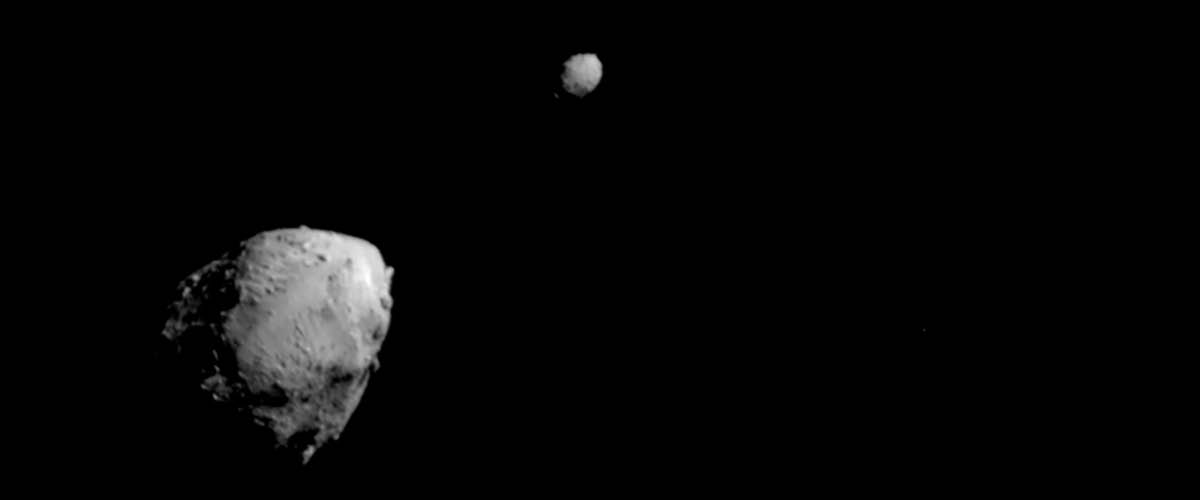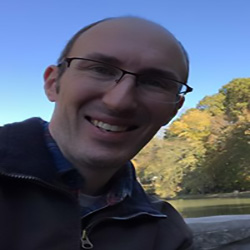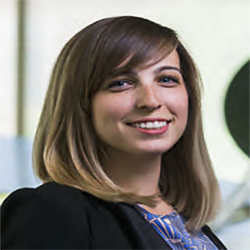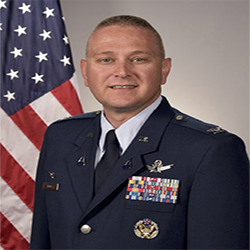Space Imaging, Making a Monumental Difference in Exploration

One of DART’s final images of asteroid Dimorphos prior to impact. Credits: NASA/Johns Hopkins APL
 |
| John Christian |
Seeing is believing. Imaging research allows us to observe the wonders of space from the comforts of our homes. Artemis I is about a week into its mission after launching on November 16, and has already captured images of the moon.
Top optical navigation and space imaging experts gathered at Georgia Tech’s Global Learning Center for the Third Space Imaging Workshop. The workshop focuses on the many ways that images can be used for space applications, such as landing spacecraft in dangerous locations. Presentations and interactive discussions highlighted optical navigation, planetary mapping, space domain awareness, computer vision algorithms, and much more.
The three-day event was hosted and organized by the Daniel Guggenheim School of Aerospace Engineering (AE), Space Exploration Analysis Laboratory (SEAL), and the Space Systems Design Laboratory (SSDL). In addition, it was co-sponsored by the American Astronautical Society (AAS) and the Georgia Space Grant Consortium.
"Imaging is unlocking new places in the solar system. The technologies that we are discussing at this workshop will soon allow us to visit destinations that weren’t accessible just a few years ago,” said John Christian, AE associate professor and Space Imaging Workshop founder and chair.
 |
| Coralie Adam |
Just weeks before the workshop, imaging played a pivotal role in the recent Double Asteroid Redirection Test (DART) mission to divert the asteroid Dimorphos. According to NASA, “During the spacecraft’s final moments before impact, its Didymos Reconnaissance and Asteroid Camera for Optical Navigation (DRACO) imager took four images capturing its terminal approach as Dimorphos increasingly filled the field of view. Images helped scientists understand the asteroid’s orbit change from DART’s impact.” The DART spacecraft was even able to stream the images from the DRACO camera back to Earth as it came toward Dimorphos, allowing millions to watch in near-real time. The DART team gave two presentations about the mission’s recent optical navigation performance during the workshop.
In addition, the workshop featured two keynote speakers. Keynote speaker Coralie Adam, the optical navigation lead at KinetX Aerospace, discussed her work on navigating the New Horizons and OSIRIS-REx missions. OSIRIS-REx was the first U.S. mission to collect a sample of an asteroid and return it to Earth for study.
“Image-based navigation saved the OSIRIS-REx mission. The team originally thought the asteroid Bennu had a smoother surface, but close-up images revealed a rocky and hazardous surface, so they had to rethink how to collect the sample.
 |
| Colonel Marc A. Brock |
One reason they were ultimately successful was the great work done by the optical navigation team,” Christian explained.
The second keynote speaker was Colonel Marc A. Brock, Commander Space Delta 2 (DEL 2) of the United State Space Force (USSF). DEL 2 is one of eight mission-oriented deltas within the USSF, focusing on Space Domain Awareness (SDA). Brock’s presentation shared insights into the USSF’s priorities with imaging for SDA applications.
This year’s workshop featured Tech participants in a variety of roles. AE graduate students Mehregan Dor, Travis Driver, Michela Mancini, Sébastien Henry, and Vaishnavi Ramanan gave technical presentations. AE graduate students Kunal Gangolli, Jonathan Schiller, Allison Schwoboda, Ava Thrasher, and Carl De Vries also served as moderators for the event. There was also a presentation by GTRI research scientist Greg Badura.
In addition, the workshop conducted a student paper competition. Framed certificates were sponsored by the Georgia Space Grant Consortium and given to the top three papers: first place: Eleonora Andreis (Politecnico di Milano), second place: Collin Abidi (University of Pittsburgh, NSF-SHREC) and third place, Vaishnavi Ramanan (Georgia Institute of Technology).
The next Space Imaging Workshop is expected to be held in 2024. For more information about this workshop, please visit SEAL